Benefits of Amalaki, dosage, side effects, and how to use?
What is Amalaki? Amalaki is one of the most important Ayurvedic proprietary medicine. It is one of the ingredients of …

What is Amalaki?
Amalaki is one of the most important Ayurvedic proprietary medicine. It is one of the ingredients of Triphala and is also used as Rasayana in Ayurveda. In Vedic literature fruits of Amalaka were considered as best among the fruits. Its fruit along with other herbs were mixed in water and used for bathing during marriage rituals. There are numerous benefits of amalaki are described.
Fruit of Amalaki has various health benefits, it is edible fruit rich in vitamin C. It is best for the Skin and hair and it is known Antioxidant that prevents aging and rejuvenating. Amalaki is consumed in various forms, including fresh fruit, juice, powder, and supplements. It can be integrated into a balanced diet or used as an herbal remedy.
What is Morphology of Amalaki?
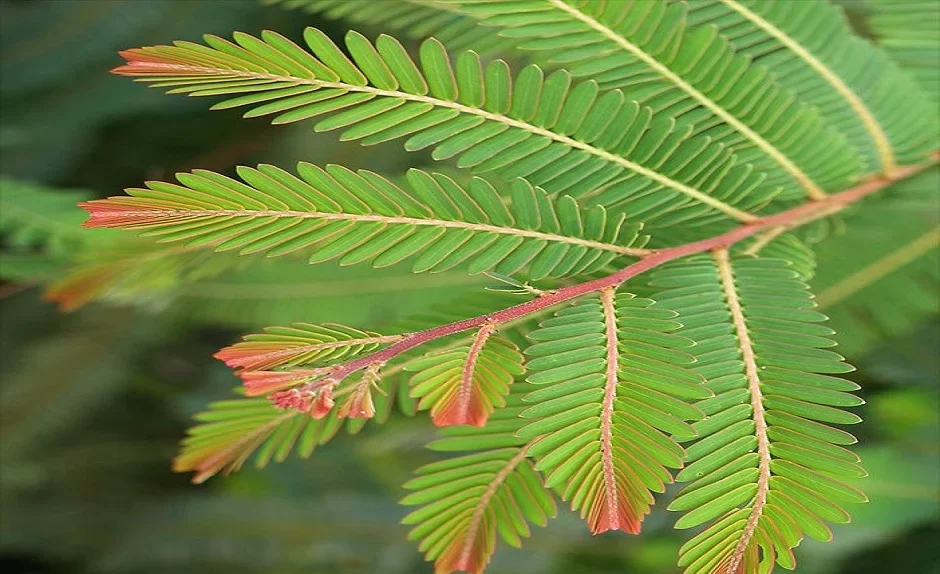
Latin name–Emblica officinalis Gaertn. (Fam. Euphorbiaceae)
Emblica officinalis is a large deciduous tree with greenish grey or red bark, peeling off in scales. Amalaki fruit are berry, depressed globose, succulent, yellow or pink when ripe, obscurely six-lobed.
Type of Amalaki
In Ayurvedic texts four varieties of Amalaki are mentioned,
- Krishna
- Amrit
- Neelam
- Kanchan
Synonyms
Dhatri, Amla, Abhaya, Amruta, Dhatri, Vayastha, Vayasya, Vrishya, Tishyaphala, Sitaphala
Classical Categorization
Charak: Jvaraghna, Kasaghna, Virechanopaga, Kusthaghna, Vayasthapana
Sushruta: Amalakyadi, Parushakadi, Triphala
Vaghbhatta: Parushakadi
Other/Regional Language Names
- English: Emblic Myrobalan
- Gujarati: Ambala, Amala
- Hindi: Amla, Aonla
- Kannada: Nellikayi
- Kashmiri: Embali, Amli
- Malayalam: Nellikka
- Marathi: Anvala, Avalkathi
- Oriya: Anala, Ainla
- Punjabi: Aula, Amla
- Tamil: Nellikkai, Nelli
- Telugu: Usirika
- Urdu: Amla, Amlaj
- Assamese: Amlaku, Amlakhi, Amlakhu
- Bengali: Amla, Dhatri
Constituents
- Ascorbic acid and tannins
- Vitamin C
- Galic acid
- Calcium
Root: – Ellagic acid, lupeol, Oleanolic aldehyde
Bark: – Leucodephinidin, Procyanidin, Tannin etc
Fruit: – Vit C, Phyllembin, linolic acid, Indole acitic acid, ayxubsm trigaloyglucose, trechebin, corilagin, ellagic acid, phyllemblic acid & salts.
Rasa Panchak
- Rasa: Amla, Kashaya, Madhura, Tikta, Katu
- Guna: Ruksha, Laghu
- Virya: Shita
- Vipaka: Madhura
- Karma: Tridoshahara, Vrishya, Rasayana, Chakshusya, Rasayan
References in Ayurvedic texts
विद्यादामलके सर्वान् रसान् लवणवर्जितान् ।
(च० सू०; 27/147)
अम्लं समधुरं तिक्तं कषायं कटुकं सरम् ।
चक्षुष्यं सर्वदोषघ्नं वृष्यमामलकीफलम् ।
हन्ति वातं तदम्लत्वात्पित्तं माधूर्यशैत्यतः ।
कफं रुक्षकषायत्वात्फलेभ्योऽभ्यधिकं च तत् ॥
(सु० सू०; 46/143-144)
वयस्यामलकी वृष्या जातीफलरसं शिवम् ।
धात्रीफलं श्रीफलं च तयामृतफलं स्मृतम् ।
त्रिष्वामलकमाख्यातं धात्री तिष्यफलाऽमृता ॥
हरीतकी समं धात्रीफलम् किन्तु विशेषतः ।
रक्तपित्तप्रमेहघ्नं परं वृष्यं रसायनम् ॥
हन्ति वातं तदम्लत्वात्पित्तं माधुर्य शैत्यतः ।
कफं रूक्षकषायत्वात्फलं धात्र्यास्त्रिदोषजित ॥
यस्य यस्य फलस्येह वीर्यं भवति यादृशम् ।
तस्य तस्यैव वीर्येण मज्जानमपि निर्दिशेत् ॥
(भा० प्र०; हरीतक्यादि वर्ग; 38-41)
आमलकं कषायाम्लं मधुरं शिशिरं लघु ।
दाहपित्वमीमेहशोफघ्नं च रसायनम् ॥
(रा० नि०; 327)
जातीफलरसा सीधुरसा सीधुफला तथा |
वयःस्था चामृतफला तिष्या तिष्यफलाऽमृता ||२३५||
धात्री वृष्या वृष्यफला दिव्या राधामृतोद्भवा |
धात्रीफलं शीतफलं निष्कं(तिष्यं) रसफलं मतम् ||२३६||
श्रीफलञ्चामृतफलं कोलकामलकं शिवम् |
शृङ्गी धात्री चामलकी शुक्तिः शुष्कामलक्यपि ||२३७||
तद्वद् धात्री स्वेदमेदोहराम्ला शुक्रला हिमा |
भग्न सन्धानकृत् केश्या पिपासाकफपित्तहृत् ||२३८||
तन्मज्जा तुवरः स्वादुस्तृट्छर्द्यनिलपित्तहा |
हन्ति वातं तदम्लत्वात् पित्तं माधुर्यशैत्यतः ||२३९||
कफं रूक्षकषायत्वात् फलेभ्योऽभ्यधिकं मतम् |
चक्षुष्यं सर्वदोषघ्नं वृष्यमामलकीफलम् ||२४०||
(कैयदेव नि. औषधि वर्ग)
What are Benefits of Amalaki?
- Raktapitta
- Amlapitta
- Prameha
- Daha
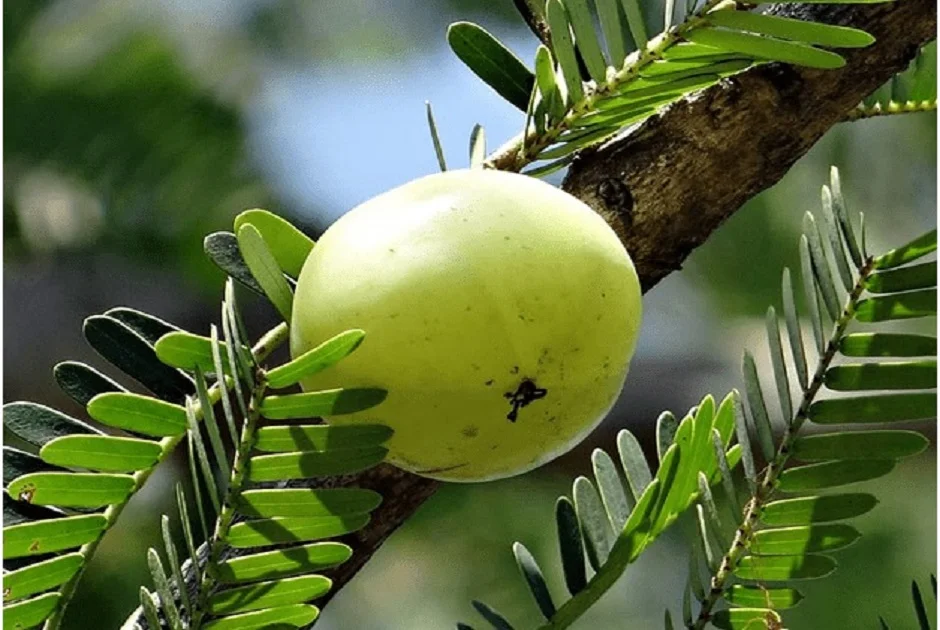
What is use of Amla in texts?
- Ripen banana, Amalaki svarasa, Honey and Sugar are taken together in Soma roga. (G.N.)
- Amalaki and Haridra juice with Honey in prameha. (A.Hr. Utt 40)
- Amalaki svaras and Kapittha with pippali Churna with Honey in Hikka roga. (Ch.Chi. 17)
- Amalaki uses for hair- It is rich in vitamin C and antioxidants, which strengthen hair follicles, prevent premature graying, and stimulate hair growth. Amalaki oil or powders are commonly used in hair care routines to nourish and revitalize the hair, making it shinier and healthier.
how much is Dose?
Phala – 3-6 g of the drug in powder form
Phalamajja -10-20 g of the drug
Amalaki Svarsa – 5-10 ml
What are the Useful Part
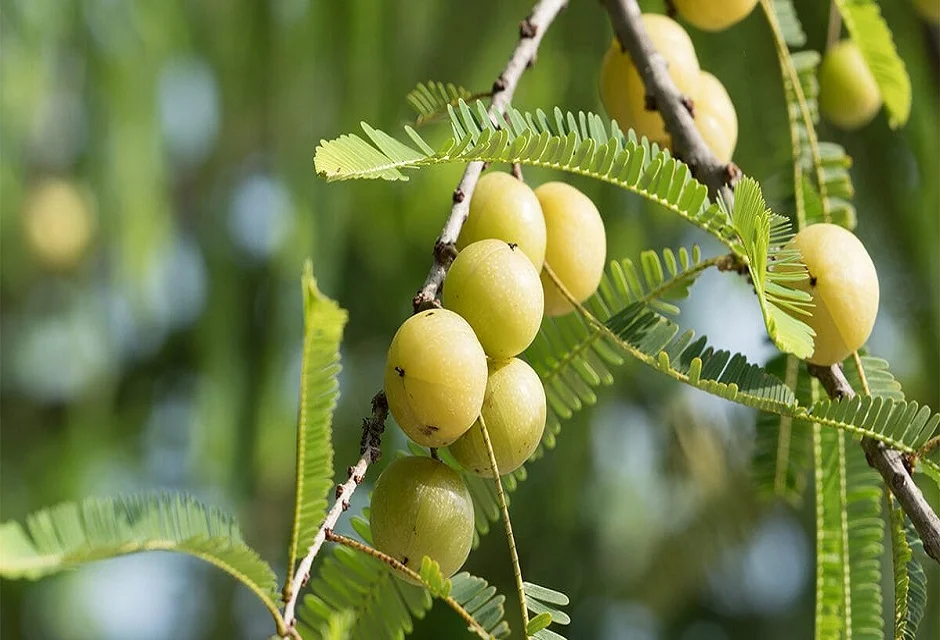
Phala (Fruit)
What are the side effects of Amalaki? / amalaki side effects
Amalaki, commonly known as Indian gooseberry or Amla, is generally well-tolerated, but some individuals may experience side effects like gastrointestinal discomfort, diarrhea, or heartburn, especially with excessive consumption. It’s important to consume it in moderation and consult with an Ayurvedic practitioner for personalized guidance.
Side effects are of taking the drug in high doses, under the guidance of qualified vaidya, or in appropriate doses it is safe to consume.
Additional information
List of formulations
- Chyavanaprasha
- Dhatri Lauha
- Dhatryadi Ghrita
- Triphala Churna
- Amalaki churna
- Amalaki rasayan
Morphology – Vriksha (tree)
Research
- A Critical review of Amalaki
- Antidiabetic property & hypoglycaemic activity: Emblica fruit powder reduced blood sugar levels in normal rabbits, as well as in hyperglycaemic rabbits proving the hypoglycaemic activity (Tripathi et al., 1979).
- A clinical study on Niśāmalaki curna (15 patiens) in diabetes proves the efficacy of the combination (Gopalakumar et al;1995 & Nagrjuna. Jan. 1983 p. 105-107).
- Anti-peptic ulcer activity- 30 cases of ulcer and non- ulcer dyspepsia showed equal improvement in subjective and objective parameters with conventional antacids and emblica fruits (Chawla et al., 1982 and 1987).
- Dried seed powder (10 g in two divided doses for 4 weeks) significantly reduced the symptoms of Amlapitta (Sharma, 1990; Tripathi et al., 1992; Mathew et al., 1995)
- Hypo-lipidemic and anti-atherosclerotic activity-Five groups of rabbits were studied for 16 weeks to determine the effect of emblica fruit and vit. c (6 mg/kg) on cholesterol-in- duced hypercholesterolaemia and atherosclerosis. Both reduced the serum cholesterol (Thakur & Mandal, 1984).
- Amla juice and pulp (35 mg/kg/day) have prevented the development of experimental atheroma both in aorta and coro- nary artery (Bordia et al., 1985).
- Amla (fed to rabbits) showed hypolipidemic and anti- atherosclerotic activity (Mand et al., 1991).
- Anti-microbial activity- Emblica fruit found to have very potent anti-bacterial activity (Vinayagamorthy, 1982).
- Isolation of anti-microbial substance phyllemblin from the stem-gall callus is reported (Jain et al., 1984).
- Anti-emetic activity– The crude alcoholic extract of emblica fruits (dry) administered orally was found effective in controlling centrally-induced emesis by apomorphine in dogs. (Yaqueenuddin et al., 1990).
- Anti-inflammatory activity– The water fraction of the methanol extract of leaves was effective in rat paw inflammation (Summanen et al., 1993)
- Antoxidant activity– The long-lived belief that the thera- peutic effects of Amla is due to its rich vit c (L-ascorbic acid) content has thus been dispelled. The petent vit. c-like activity (antioxidative effect against reactive O, species, Ros) of Amla fruits has now been located in the Low Mr (Mol. wt. less than 1000) hydrolysable tannins. Four such compounds, emblicanin-A (1), emblicanin- B(2), puniglucomin and penduculagin, have been isolated from the fruit pericarp (Ghosal et al., 1996).
- Hepatoprotective activity– Dry powdered pulp of fruits (1.0g/kg) reduced the levels of serum, aortic and hepatic choles- terol significantly in rabbits (Thakur, 1995).
- Rasayana activity– Āmalaki Rasayana is said to have growth promoting effect (growth & longevity). The drug has no significant effect on the levels of serum protein fractions, yet it raises the total protein level and increases the body weight. The study also indicates that the increase in body weight is due to a positive nitrogen balance (Tewari et al; 1968).
- CNS activity– Phyllembilin (ethyl gallate), has been found to potentiate some of the pharmacological actions of adrenalin in vitro and in vivo. Besides it shows a mild depressant CNS and has spasmolytic activity Ca. & Siddique; Ind. J. Exp. Bol. Vol. 2 Jan, 1964, p. 29-31). Phyllemblin antagenized the spasmogenic effect of acetyl- choline, bradykinin and serotonin on the guinea-pig ileum (Khurana et al., 1970).
Your queries
What is the difference between Amla and Amalaki rasayan?
Amla refers to the fruit itself, while Amalaki Rasayan is a prepared Ayurvedic herbal formulation made from Amla. The Rasayan is believed to have rejuvenating and immune-boosting properties, making it distinct from the raw fruit.
Is Amalaki hot or cold?
In Ayurveda, Amalaki is considered cooling (cold), suitable for balancing excess heat or pitta dosha. However, its nature can change based on preparation and combinations with other herbs, so individual factors and practitioner guidance are crucial for personalized recommendations.
Conclusion
Amalaki, or Emblica officinalis, is a potent Ayurvedic herb renowned for its numerous health benefits. It effectively addresses conditions such as bleeding disorders, acidity, diabetes, and burning sensationsThis versatile fruit is a key component in various Ayurvedic formulations, and embodies the holistic approach of Ayurvedic medicine, offering a natural and multifaceted solution to promote overall well-being. Its adaptability and wide-ranging benefits make it a significant player in traditional healing practices.

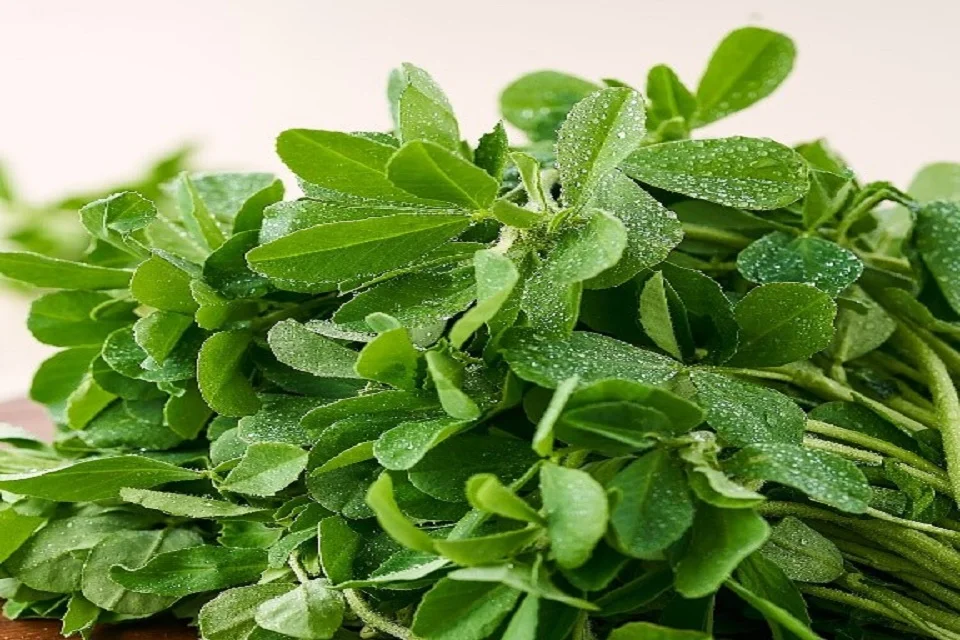




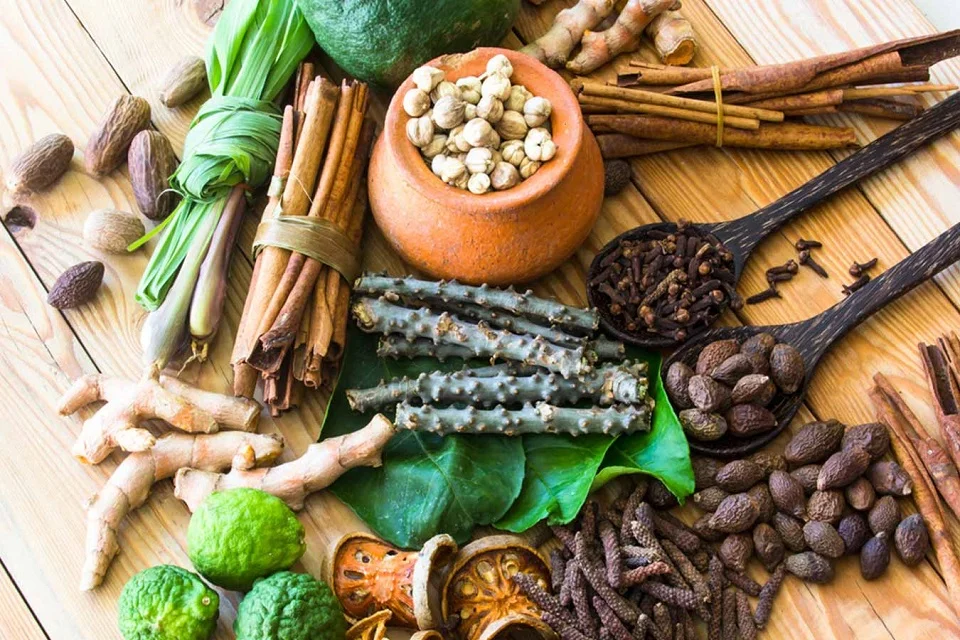

[…] Amalaki(Phyllanthus emblica) Hypolipidemic and anti-atherosclerotic activity -5 groups of rabbits were studied for 16 weeks to determine the effect of emblica fruit and vitamin C (6 mg/kg) on cholesterol-induced hypercholesterolemia and atherosclerosis. Both reduced the serum cholesterol (Thakur and Mandal, 1984) Amla showed hypolipidemic and anti-atherosclerotic activity (Mand et al., 1991) […]
[…] Amalaki (Emblica officinalis): Rich in Vitamin C: Supports immune function and antioxidant activity. Astringent: Helps in toning tissues and promoting digestive health. Rejuvenating: Supports overall vitality and longevity. […]
Super thankful! 🎉